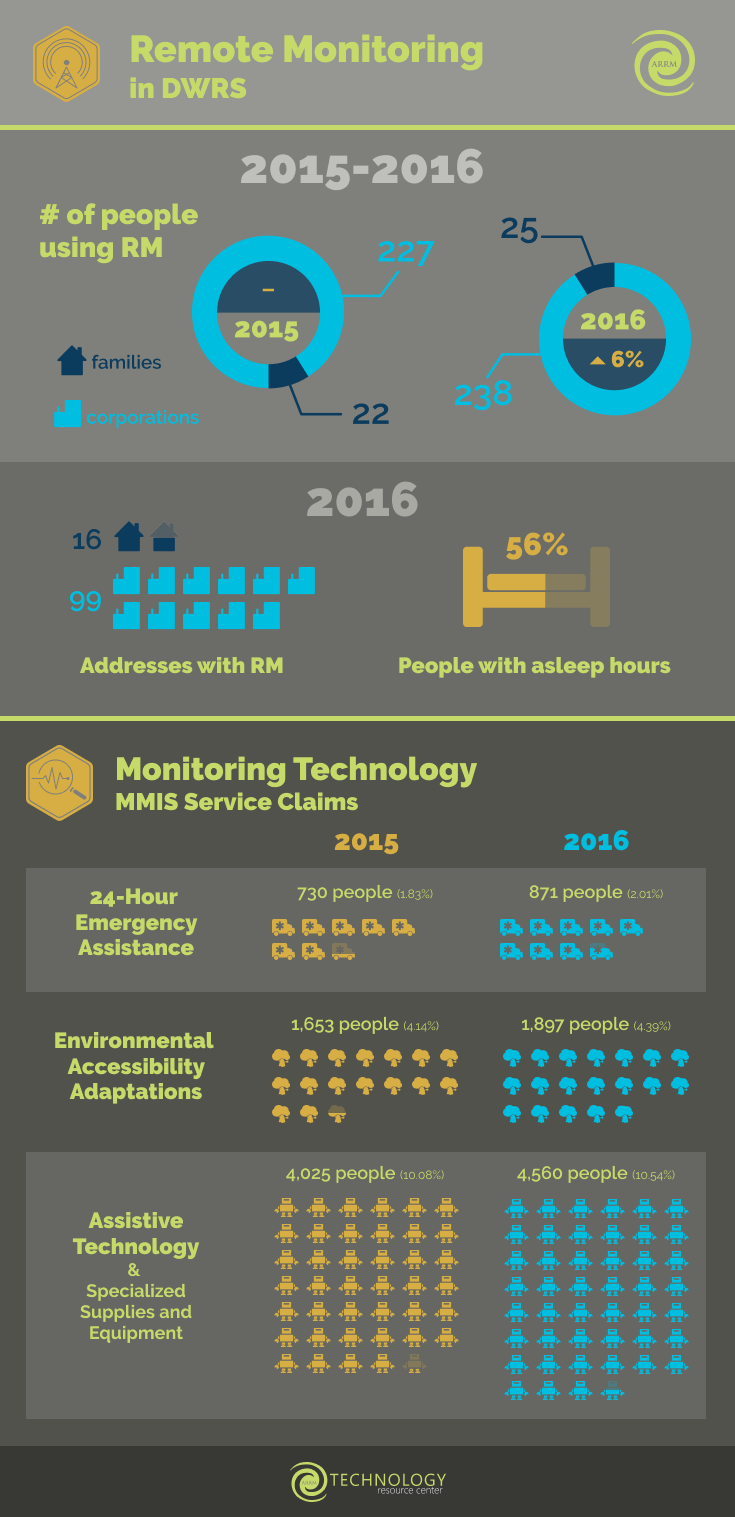
ARRM Technology Initiative – Progress Report

The ARRM Technology Initiative began in 2016 with the intention of seriously moving the needle on the adoption of supportive technologies for people with disabilities. This effort had the dual purpose of promoting greater independence and better managing increasingly limited human and financial resources. In 2017, we made great strides to further our objective by launching the ARRM Technology Resource Center.
The ARRM TRC was created to serve as a one-stop resource where providers, families, people with disabilities, and case managers could come together to find new and curated tools and information that answer key questions and concerns. During this initial year launch, we’ve published several success stories, formal case studies, educational resources and articles, as well as a structured process to help people get from starting a conversation to measuring results. We’ve found great engagement in the community and are excited about our results so far.
Both to ensure this work had a defined purpose, and as part of ARRM’s commitment to being a leader in the progress of community-based services for people with disabilities, measurable goals were outlined for the initiative. More concretely, we sought to year-over-year increase in technology usage by ARRM members & year-over-year reduction of on-site staff time in key direct areas, such as overnight sleep staff (or said another way – to increase the service billing to DHS of remote monitoring and assistive technologies).
We’ve outlined our key findings on the adoption of technology as reported through DHS:
What surprised us…
In addition to 54% of corporate foster care recipients receiving sleep staff hours and that the minimum number of DSP FTEs in 2016 is over 2000;
- While remote monitoring shared and individuals hours in corporate foster care increased by 69,316 from 2015 to 2016, the number of sleep hours increased by 272,608
- The percent of people in corporate foster care with remote monitoring hours decreased slightly (1.91% to 1.84%), while the percent with sleep hours stayed the same at 54%.
— Sandy Henry, Technology Advocate and former community residential services provider
I think for me the most interesting thing is the lack of change from 2015 to 2016 (Remote Monitoring (RM) in DWRS. It is possible that the growth from 15-16 was still in its infancy and 2017 showed more substantial growth, however, I would have still expected the number of people using RM to go up (and technically the number went down. Three more people total were using RM, however the % of total recipients went down in addition to total hours).
— Dan Millan, Remote Monitoring Systems Analyst- Home and Community Options
The number of RM Family hours from 2015 to 2016 was reduced by more than 50% while Corporate hours went up YoY by nearly 30%.
— Tim Janssen, Operations Director – Sengistix, LLC
What does this mean for our industry
The number of people using RM align with my expectations that it is not widely utilized in MN. There is a big opportunity to further review who may benefit from RM supports, especially given the number of asleep hours being utilized.
— Tim Janssen, Operations Director – Sengistix, LLC
This only emphasizes the fact that we know we have technology that can help support people, and we have people that would benefit from technology support yet there is some barrier preventing the people from gaining access to the technology.
— Dan Millan, Remote Monitoring Systems Analyst- Home and Community Options
These numbers tell me that from 2016 we have a lot of education to do and opportunities to free up a substantial number of DSP hours currently consumed in sleep time.
— Sandy Henry, Technology Advocate and former community residential services provider
What’s next?
We are proud and excited by the results achieved so far, but we’ve only just begun. There is much work to be done to close the knowledge gaps and remove barriers to technology implementation. From the outset, the ARRM Technology Initiative was created to foster a community of individuals and organizations in order to increase independence for individuals with disabilities, extend caregivers reach, and improve tools to deliver better person-centered support.
There are several ways to get involved:
- Join the workgroup
- Contribute a story or resource
- Spread the word
Many thanks to all the organizations and individuals that have been apart of this journey—to those that have been there since the beginning and the others that have joined along the way. We look forward to forming new partnerships and reaching our goals together in the year to come.
Thanks,
ARRM Technology Initiative



